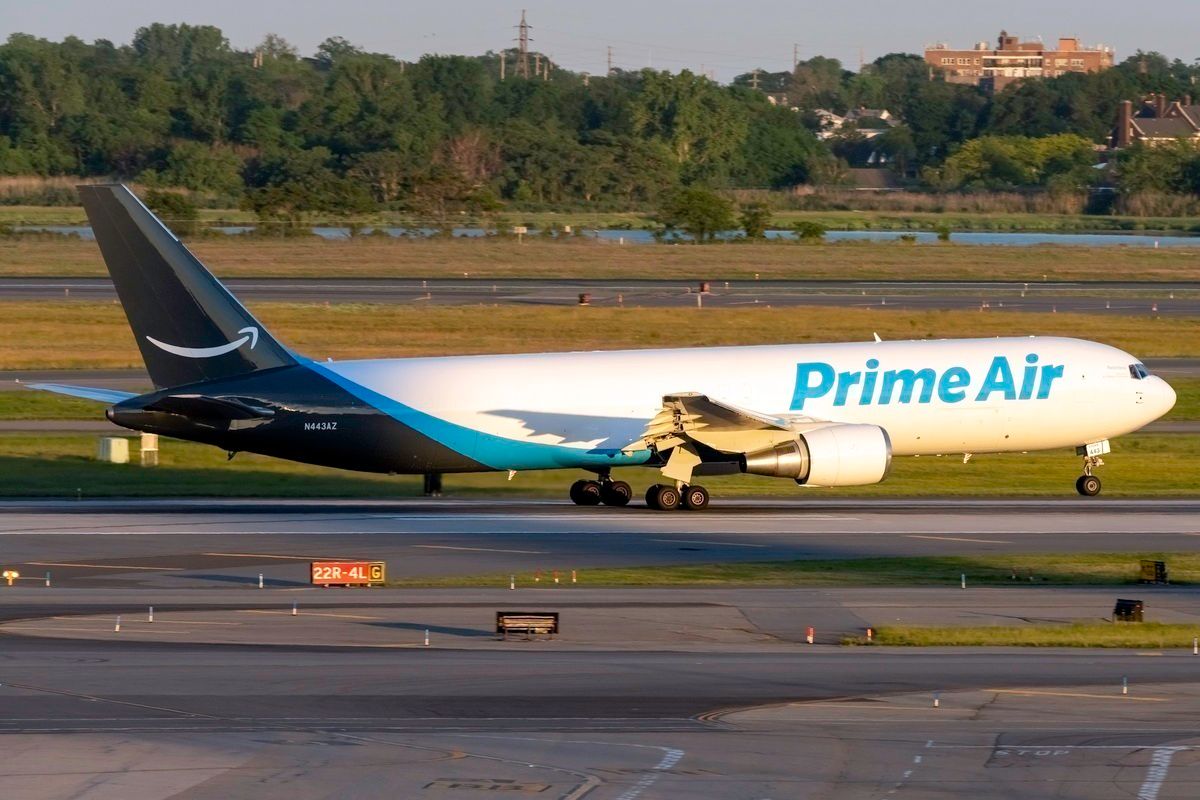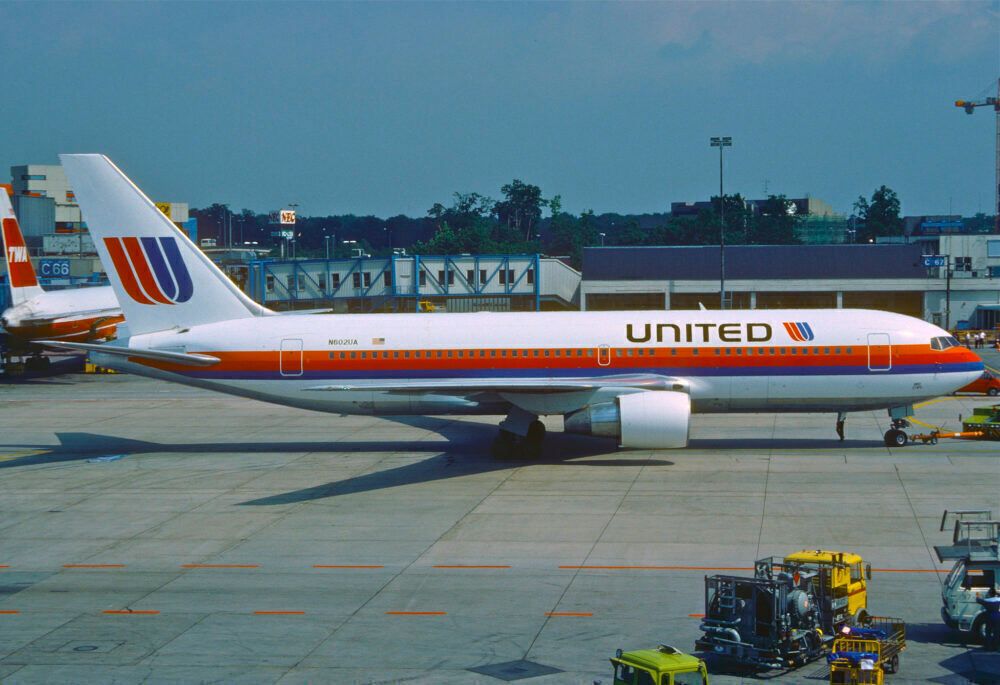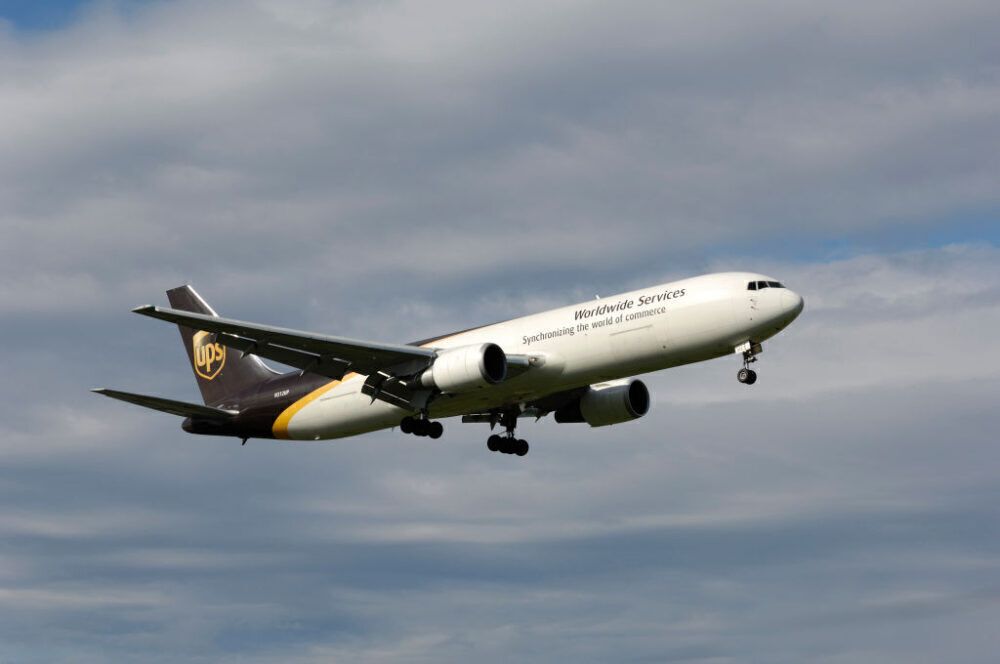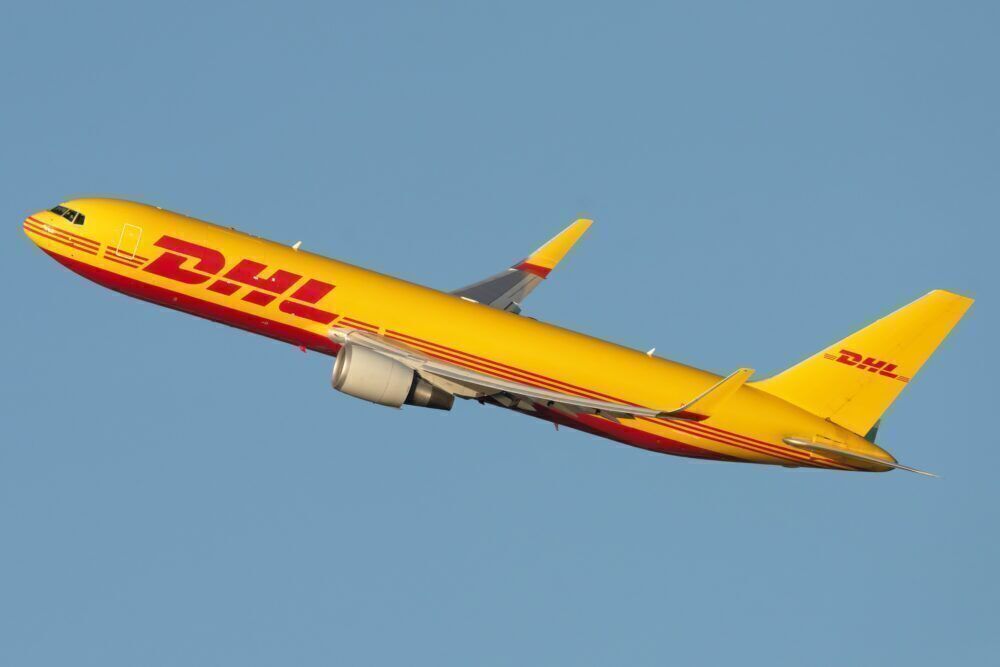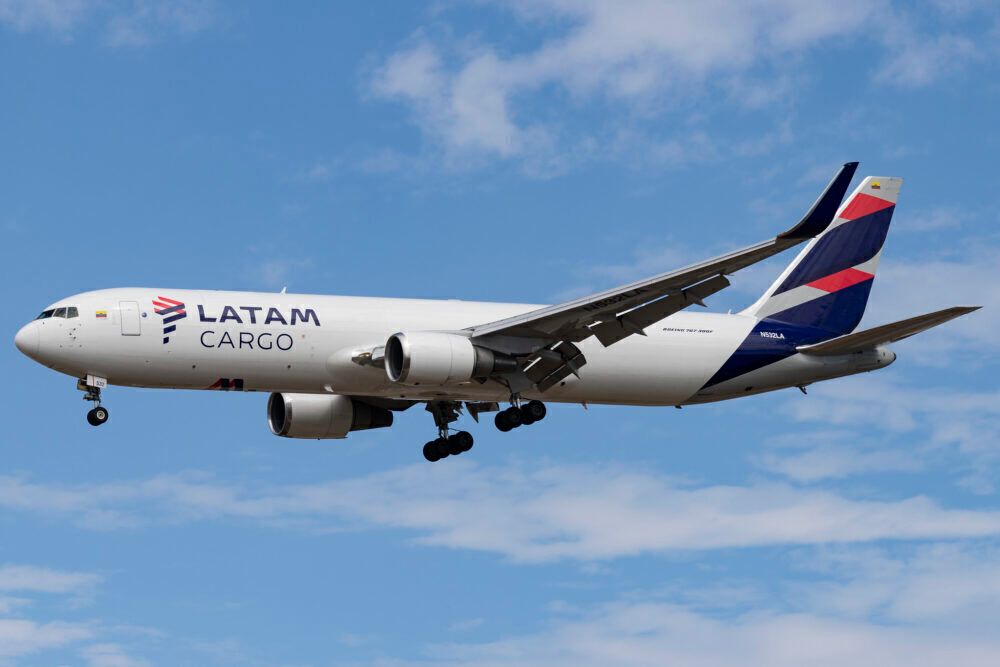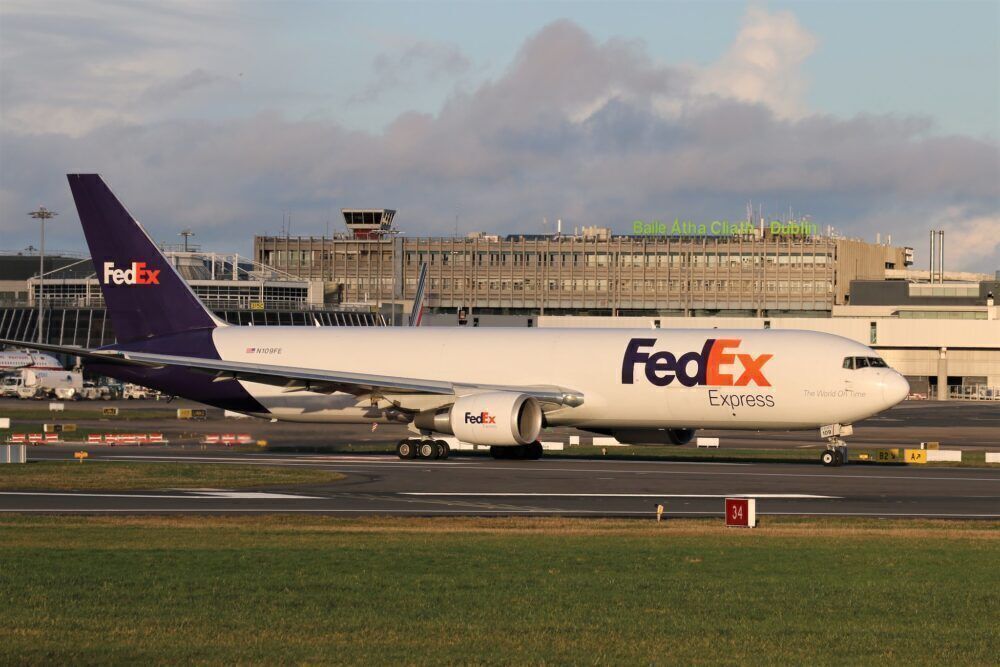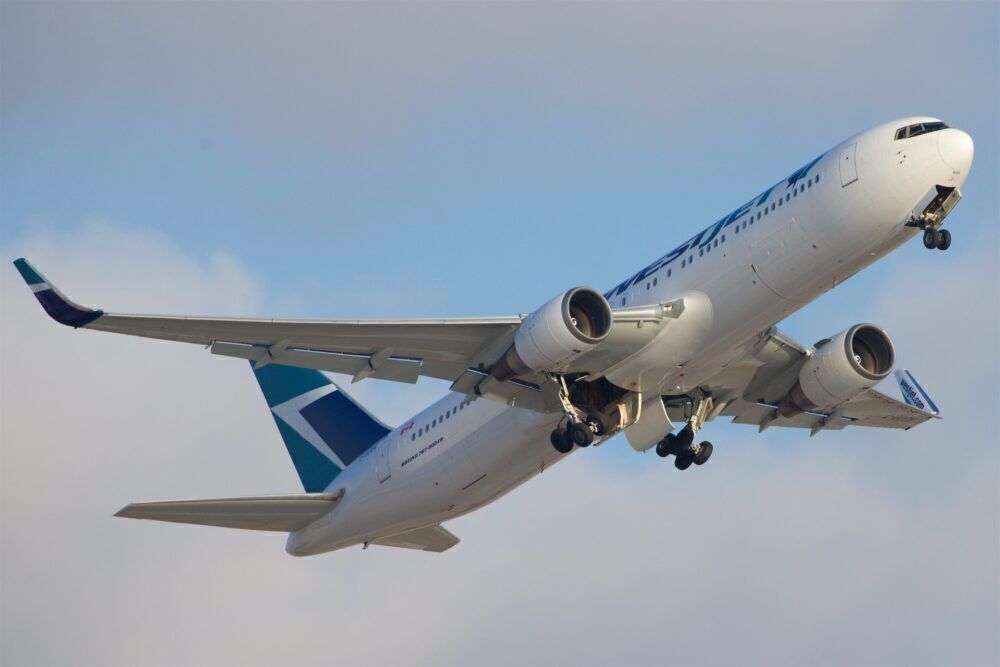The Boeing 767 entered active commercial service nearly four decades ago, in September 1982. Despite so much time having since passed, this is an aircraft family that remains in production to this day. A key factor in this is the popularity of the plane among cargo operators. While passenger-carrying 767s have been superseded by the likes of the 787, freight-carrying airlines continue to revere the 767-300F. This is its story.
How did Boeing get to the 767-300F?
The original variant of the 767 to enter service was the 767-200. This model first took to the skies with Chicago-based US legacy carrier United Airlines in September 1982. The type had made its first test flight just a year beforehand. Today, ch-aviation.com reports that United Airlines still operates the larger -300ER and -400ER variants of the 767.
After launching an Extended Range version of the original airframe (the 767-200ER) with El Al in 1984, Boeing then looked to lengthen the aircraft. This resulted in the launch of the 767-300, which entered service in 1986 with Japan Airlines. The -300 measured 54.94 meters in length, clocking in at around 6.5 meters longer than the original -200 (48.51 meters).
Stay informed: Sign up for our daily and weekly aviation news digests.
As had been the case with the 767-200, Boeing soon opted to launch an Extended Range version of the longer -300 model. Keeping up the pattern of two-year launch intervals, this first took to the skies commercially with American Airlines in 1988. Within a decade, the 767-300 would go on to form the basis of a popular cargo variant of the family.
The 767-300F emerges
By the time the 1990s rolled around, Boeing had established itself as a key player in the cargo market. As such, it found itself able to launch a freighter program for the 767 series in 1993, when United Parcel Service (UPS) ordered 60 of the company's specialized 767-300Fs. The first of these aircraft entered service with UPS two years later, in 1995.
At the time, the order was the largest that Boeing had ever received in one go in terms of all-cargo models. According to ch-aviation.com, UPS presently has 70 of these cargo-specific planes still in its fleet today, as well as eight 767s converted from passenger use.
The best of its category
After nearly two decades of service, Boeing asserted in February 2014 that its 767-300F was "the best fit in the midsized freighter market." A plethora of operational advantages contributed to this bold, claim, with the US manufacturer stating, among others, that:
"The 767-300 Freighter is more fuel-efficient than competing aircraft in the medium-widebody freighter market. Excellent fuel efficiency, operational flexibility, low noise levels, and an all-digital flight deck allow the 767 Freighter to support time-critical
cargo schedules even at airports with stringent noise and emissions standards."
In terms of the 767-300F's specifications, the aircraft boasts an impressive cargo capacity of 438 cubic meters. 336 of these are situated in the plane's main deck, with the remaining 102 found below the cabin floor. This space allows the 767-300F to carry a maximum payload of 52.7 tonnes. It can fly such payloads as far as 3,255 NM (6,025 km) in one go.
A more efficient alternative
One of the key selling points of the 767-300F was its improved operational efficiency compared to its predecessors. As well as helping to reduce airlines' impact on the environment, this also helped them to keep their running costs down. Regarding this, Boeing stated:
"The 767 Freighter keeps ton-mile costs to a minimum with its two-person flight deck. Its twin high-bypass-ratio engines offer excellent fuel economy. The plane’s operating costs, per available ton-mile, are projected to be 20 percent lower than those of its closest competitors. This contrasts with older cargo airplanes, such as the 707 and DC-8, which have three-crew flight decks and are powered by four engines."
Operators also have the option to further enhance the efficiency of their 767-300Fs by adding winglets. As you can see below, this is an option taken up by carriers like LATAM.
100 deliveries to FedEx alone
According to Boeing's latest deliveries report, it has shipped a total of 193 767-300Fs to customers since UPS received the first in 1995. Of these, Memphis-based logistics juggernaut FedEx is the largest operator. Earlier this month, the carrier reached the milestone of taking delivery of its 100th 767-300F, which was its sixth this year.
What makes this feat all the more impressive on the part of FedEx is that it only received its first 767-300F in 2013. Since then, it has taken delivery of an average of 13 of these aircraft every year. Plenty more are on their way, with the company having ordered 130 since 2011. FedEx's 767-300Fs are also very young, with an average age of just 3.6 years old.
Also popular as a conversion
As it happens, Boeing's factory-fresh freighters are not the only way that operators can get their hands on a cargo-carrying 767. Indeed, the type is also gaining increasing significance as the subject of passenger-to-freight conversion projects. This is a good way of extending the lifespans of aircraft whose passenger-carrying days are sadly behind them.
One airline group that is doing this is LATAM. The South American holding company is aiming to nearly double its fleet of cargo-carrying 767s by 2023, increasing its contingent from 11 aircraft to 21. Interestingly, it plans on doing this not by ordering new aircraft, but instead by converting 10 of its existing passenger-carrying 767s to serve a new life as freighters.
Converting ex-passenger 767s can also be a good way for smaller cargo carriers to grow their fleets without the expense of purchasing new aircraft. This is the approach that Amazon has taken, purchasing, among others, four ex-WestJet 767s.
Overall, the Boeing 767-300F is a popular and versatile cargo aircraft that suits cargo airlines of all sizes. It is particularly encouraging to know that Boeing is continuing to produce brand-new examples, meaning that the 767's story will continue for years to come.
What do you make of the Boeing 767-300F? Have you ever seen or even worked on one on your travels? Let us know your thoughts and experiences in the comments.

